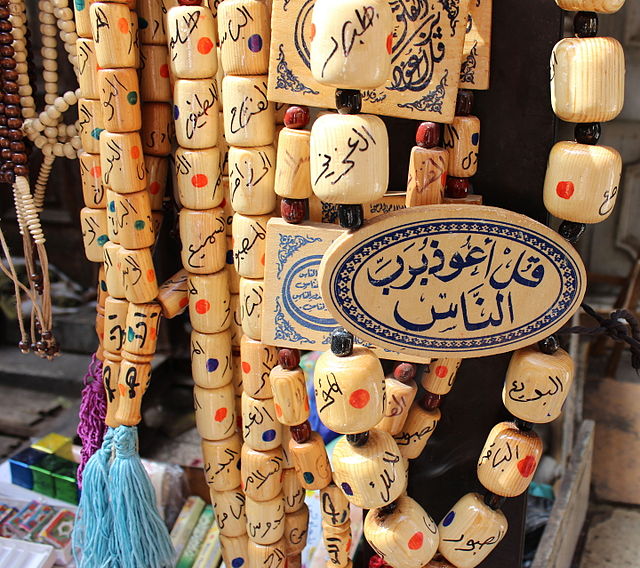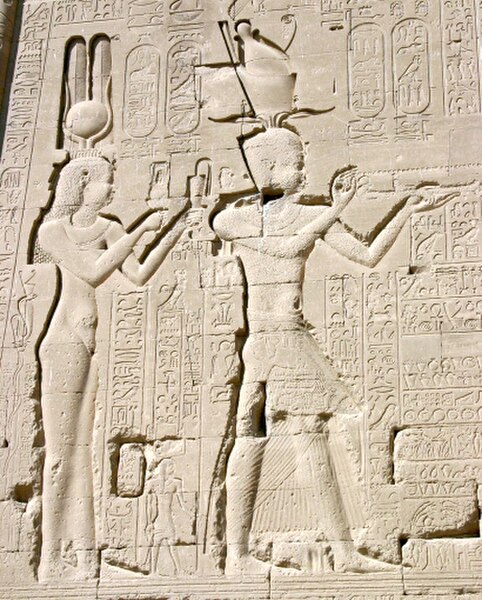The culture of Egypt has thousands of years of recorded history. Ancient Egypt was among the earliest civilizations in the world. For millennia, Egypt developed strikingly unique, complex and stable cultures that influenced other cultures of Europe, Africa and the Middle East.
Arabic calligraphy has seen its golden age in Cairo. This adornment and beads being sold in Muizz Street
Hieroglyphs, as this example from a sarcophagus from Thebes of about 530 BC, represent both ideograms and phonograms.
Sample of a Book of the Dead of the scribe Nebqed, c. 1300 BC.
Akhenaten, Dweller in Truth, a 1985 novel by Nobel Literature Laureate Naguib Mahfouz.
Egypt, officially the Arab Republic of Egypt, is a transcontinental country spanning the northeast corner of Africa and the Sinai Peninsula in the southwest corner of Asia. It is bordered by the Mediterranean Sea to the north, the Gaza Strip of Palestine and Israel to the northeast, the Red Sea to the east, Sudan to the south, and Libya to the west. The Gulf of Aqaba in the northeast separates Egypt from Jordan and Saudi Arabia. Cairo is the capital and largest city of Egypt, while Alexandria, the second-largest city, is an important industrial and tourist hub at the Mediterranean coast. At approximately 100 million inhabitants, Egypt is the 14th-most populated country in the world, and the third-most populated in Africa.
Temple of Derr ruins in 1960
The Giza Necropolis is the oldest of the ancient Wonders and the only one still in existence.
The Weighing of the Heart from the Book of the Dead of Ani
The Ptolemaic Queen Cleopatra VII and her son by Julius Caesar, Caesarion, at the Temple of Dendera








